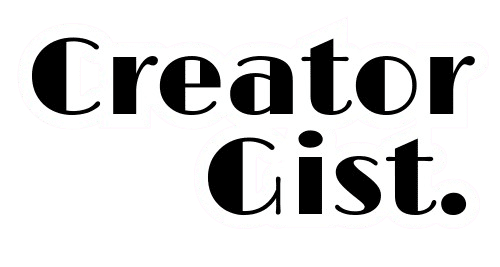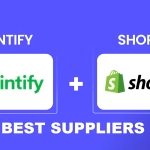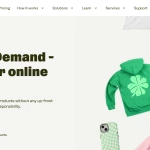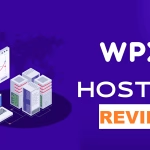Let’s be real—navigating affiliate marketing as a lifestyle blogger can feel like trying to find a needle in a haystack. I know because I’ve been there: signing up for random programs, promoting products that didn’t resonate, and earning a whopping $2.50 in my first month (ouch). But once I discovered the best affiliate programs for lifestyle bloggers, everything changed.
These programs not only fit my niche but also helped me connect with my audience in a way that finally turned clicks into cash. If you’re ready to ditch the guesswork and start earning, I’ve got you covered.
This guide isn’t just theory – it’s based on years of trial, error, and success. I’ll share everything I’ve learned about choosing the right programs, creating converting content, and building a sustainable income stream. Let’s dive in!
The Affiliate Marketing Landscape in 2025 📊
The affiliate marketing industry is evolving faster than ever, and 2025 is shaping up to be a game-changer for lifestyle bloggers. With advancements in technology, shifting consumer behaviors, and a growing emphasis on authenticity, staying ahead of the curve is crucial.
If you’re looking for the best affiliate programs for lifestyle bloggers, understanding the current trends and strategies is your first step to success.
Key Trends Defining 2025
- AI-Powered Personalization Tools: AI is revolutionizing how bloggers recommend products. Tools like ChatGPT and Jasper AI help create hyper-personalized content that resonates with your audience.
- Micro-Influencer Partnerships: Brands are prioritizing collaborations with micro-influencers (like you!) because of their higher engagement rates and niche audiences.
- Sustainable and Ethical Brands: Consumers are increasingly drawn to eco-friendly and socially responsible products. Promoting these brands can boost your credibility and conversions.
- Mobile-First Content: Over 70% of affiliate traffic comes from mobile devices. Optimizing for mobile is no longer optional—it’s essential.
- AR/VR Shopping Experiences: Augmented and virtual reality are transforming how consumers shop online, offering immersive experiences that drive sales.
What’s Working Now
- Video Content Integration: Short-form videos (think TikTok and Instagram Reels) are driving massive engagement and conversions.
- Social Commerce Partnerships: Platforms like Instagram and Pinterest are making it easier than ever to shop directly from posts.
- Voice Shopping Optimization: With the rise of smart speakers, optimizing for voice search is becoming a must.
- Sustainable Product Promotion: Brands like Grove Collaborative and Package Free Shop are thriving as consumers prioritize sustainability.
- Mental Wellness and Self-Care Niches: Programs like Headspace and BetterHelp are seeing record growth as mental health awareness increases.
Now that we’ve covered the trends, let’s dive into the best affiliate programs for lifestyle bloggers that are worth your time in 2025.
Major Affiliate Networks Worth Your Time
1. ShareASale Network

ShareASale has been a cornerstone of my affiliate strategy, offering access to over 3,900 merchants. It’s perfect for lifestyle bloggers because of its diverse range of niches, from home decor to wellness.
Top Programs:
- Wayfair: 5-7% commission (ideal for home decor content).
- Anthropologie: 8% commission (great for fashion and lifestyle).
- Tailwind: 15% + recurring (perfect for Pinterest-focused bloggers).
- StudioPress: 35% commission (excellent for tech-savvy bloggers).
💡 Pro Tip: Focus on home decor and wellness merchants—they consistently deliver the highest ROI.
2. Amazon Associates Program

Despite commission cuts in recent years, Amazon remains a reliable choice for lifestyle bloggers. Its vast product range and trusted brand name make it a go-to for beginners.
Commission Structure:
- Luxury Beauty: 10%
- Furniture: 3%
- Fashion: 4%
- Home Improvement: 3%
💡 Pro Tip: Use Amazon for product roundups and gift guides. Its high conversion rate makes up for lower commissions.
3. Impact Radius

Impact Radius is growing rapidly, partnering with premium brands that align perfectly with lifestyle niches.
Notable Partners:
- Airbnb: Up to $100 per booking (ideal for travel bloggers).
- Adidas: 7% commission (great for fitness and fashion content).
- Lenovo: 7% commission (perfect for tech-focused bloggers).
- HelloFresh: $10-50 per subscription (excellent for food and wellness niches).
💡 Pro Tip: Impact Radius offers advanced tracking tools, making it easier to optimize your campaigns.
4. Awin Network

Awin is a powerhouse for bloggers with an international audience. Its diverse merchant base and user-friendly interface make it a top choice.
Key Programs:
- Etsy: 4% commission (perfect for handmade and vintage content).
- ASOS: 5-8% commission (great for fashion bloggers).
- Fiverr: Up to $150 per conversion (ideal for service-based promotions).
- MyProtein: Up to 12% commission (excellent for fitness and wellness niches).
💡 Pro Tip: The Fiverr affiliate program is a hidden gem. It offers high commissions and doesn’t require a website to join.
Direct Affiliate Programs by Niche
1. Beauty and Skincare 💄
The beauty niche is booming, and these programs are perfect for lifestyle bloggers:
- Sephora Beauty Insider: 8% commission, 24-hour cookie duration.
- Fenty Beauty: 10% commission, 30-day cookie duration (high conversions during launches).
- Glossier: 15% commission, 30-day cookie duration (ideal for clean beauty content).
💡 Pro Tip: Pair product reviews with tutorials for maximum engagement.
2. Fashion and Accessories 👗
From luxury to mid-range, these programs are worth exploring:
- Nordstrom: Up to 7% commission (best during sales like Black Friday).
- Net-a-Porter: 6-10% commission (perfect for luxury fashion content).
- Revolve: 5-10% commission (strong influencer program).
- Shopbop: 7-15% commission (great for designer sales).
💡 Pro Tip: Create seasonal lookbooks to drive conversions.
3. Home Decor and Lifestyle 🏡
Home decor is a goldmine for lifestyle bloggers. These programs are top performers:
- Pottery Barn: 8% commission (high-converting during holidays).
- West Elm: 8% commission (room design content performs well).
- Wayfair: 7% commission (vast product selection and regular sales).
💡 Pro Tip: Use Pinterest to promote home decor products—it’s a visual search engine with high intent.
Emerging Opportunities in 2025 🌟
Sustainable Living Programs
- Grove Collaborative: 15% commission with recurring revenue potential.
- Package Free Shop: 10% commission (perfect for zero-waste content).
Mental Wellness
- Headspace: $10 per subscription (growing meditation market).
- BetterHelp: Up to $200 per referral (high-value conversions).
Digital Products and Tools
- Canva Pro: 25% recurring commission (easy to demonstrate value).
- Notion: 20% recurring commission (great for productivity-focused content).
Implementation Strategy 📝
Content Creation Framework
- Product Reviews (30%): In-depth analysis, personal experience, and comparison features.
- Tutorial Content (30%): How-to guides, video demonstrations, and problem-solving focus.
- Roundups (20%): Best-of lists, seasonal collections, and theme-based groupings.
- Personal Stories (20%): Authentic recommendations, before/after results, and experience sharing.
Optimization Techniques
- SEO Strategy: Focus on long-tail keywords and user intent.
- Conversion Optimization: Use clear CTAs and strategic link placement.
- Content Updates: Regularly check prices, update links, and refresh seasonal content.
Advanced Strategies for 2025
- AI Integration: Use AI tools for personalized product recommendations and content optimization.
- Social Commerce: Leverage Instagram Shopping and TikTok Shop features.
- Voice Commerce: Optimize for voice search with natural language and question-based content.
Practical Tips and Best Practices 💡
- Legal Compliance: Always include FTC disclosures and clear affiliate disclaimers.
- Performance Tracking: Monitor conversion rates, average order value, and click-through rates.
- Stay Authentic: Build genuine relationships with your audience—trust is your greatest asset.
Conclusion and Action Steps
Success in affiliate marketing doesn’t happen overnight, but with the right programs and strategies, you can turn your lifestyle blog into a thriving income stream. Start by:
- Choosing 2-3 programs that align with your niche.
- Creating valuable, targeted content that resonates with your audience.
- Implementing proper tracking and optimization techniques.
Remember, the best affiliate programs for lifestyle bloggers are the ones that align with your values and your audience’s needs. Focus on providing value first, and the sales will follow naturally.
Note
All commission rates and program details are subject to change. Always verify current terms directly with programs before joining.
FAQs
1. What is an affiliate program?
An affiliate program is a partnership where bloggers promote products or services through unique links and earn a commission for every sale or action completed through their link. It’s a popular way for lifestyle bloggers to monetize their platforms.
2. How do affiliate programs work for lifestyle bloggers?
Lifestyle bloggers join affiliate programs relevant to their niche, such as fashion, wellness, or travel. By incorporating affiliate links into blog posts, social media, or newsletters, they earn commissions when readers click the links and make purchases.
3. What are the best affiliate programs for lifestyle bloggers?
Some top programs include:
- Amazon Associates: Ideal for promoting diverse products across categories.
- RewardStyle (LTK): Perfect for fashion, beauty, and home décor bloggers.
- ShareASale: Offers partnerships with brands in health, travel, and lifestyle.
- Shopify Affiliate Program: Great for promoting e-commerce tools.
- Booking.com Affiliate: A must for travel-focused bloggers.
4. How do I choose the right affiliate program for my blog?
Consider these factors:
- Relevance: Does the program align with your blog’s niche?
- Commission Rates: Are the payouts competitive?
- Cookie Duration: Longer cookies allow more time for your readers to make a purchase.
- Support and Resources: Does the program offer tools to help you succeed?
5. How much can lifestyle bloggers earn through affiliate marketing?
Earnings vary based on traffic, audience engagement, and the affiliate program. Beginners might earn $50–$500 monthly, while seasoned bloggers can make $5,000+ monthly from affiliate income.
6. Do I need a large audience to succeed with affiliate marketing?
No, even small audiences can generate income if they are engaged and trust your recommendations. Focus on building a loyal community and providing valuable, authentic content.
7. What content works best for affiliate links?
- Product Reviews: Share detailed opinions about products you’ve tried.
- Listicles: Compile “Top 10” lists featuring affiliate products.
- How-To Guides: Demonstrate how a product solves a problem or fits into a lifestyle.
- Seasonal Content: Highlight products for holidays or special occasions.
8. Are there any tools to help lifestyle bloggers with affiliate marketing?
Yes! Useful tools include:
- ThirstyAffiliates: For managing and shortening affiliate links | Recommended
- Canva: To create visually appealing content for promotions.
- Google Analytics: To track which posts and links drive traffic and conversions.
- Email Marketing Platforms: Use Beehiiv or Mailchimp to nurture your audience.

9. How can I disclose affiliate links on my blog?
Transparency is key! Include a clear disclosure, such as:
- At the beginning of your blog post: “This post contains affiliate links. I may earn a commission at no extra cost to you.”
- On social media: Use hashtags like #ad or #affiliate.
10. What are common mistakes to avoid in affiliate marketing?
- Promoting irrelevant products: Only recommend items that match your audience’s interests.
- Overloading content with links: Focus on quality over quantity.
- Ignoring performance analytics: Regularly assess which links perform best.
- Skipping disclosures: Always be upfront about your affiliate partnerships to build trust.
Explore Common Affiliate Marketing Mistakes to Avoid in 2025 (and How to Succeed)








